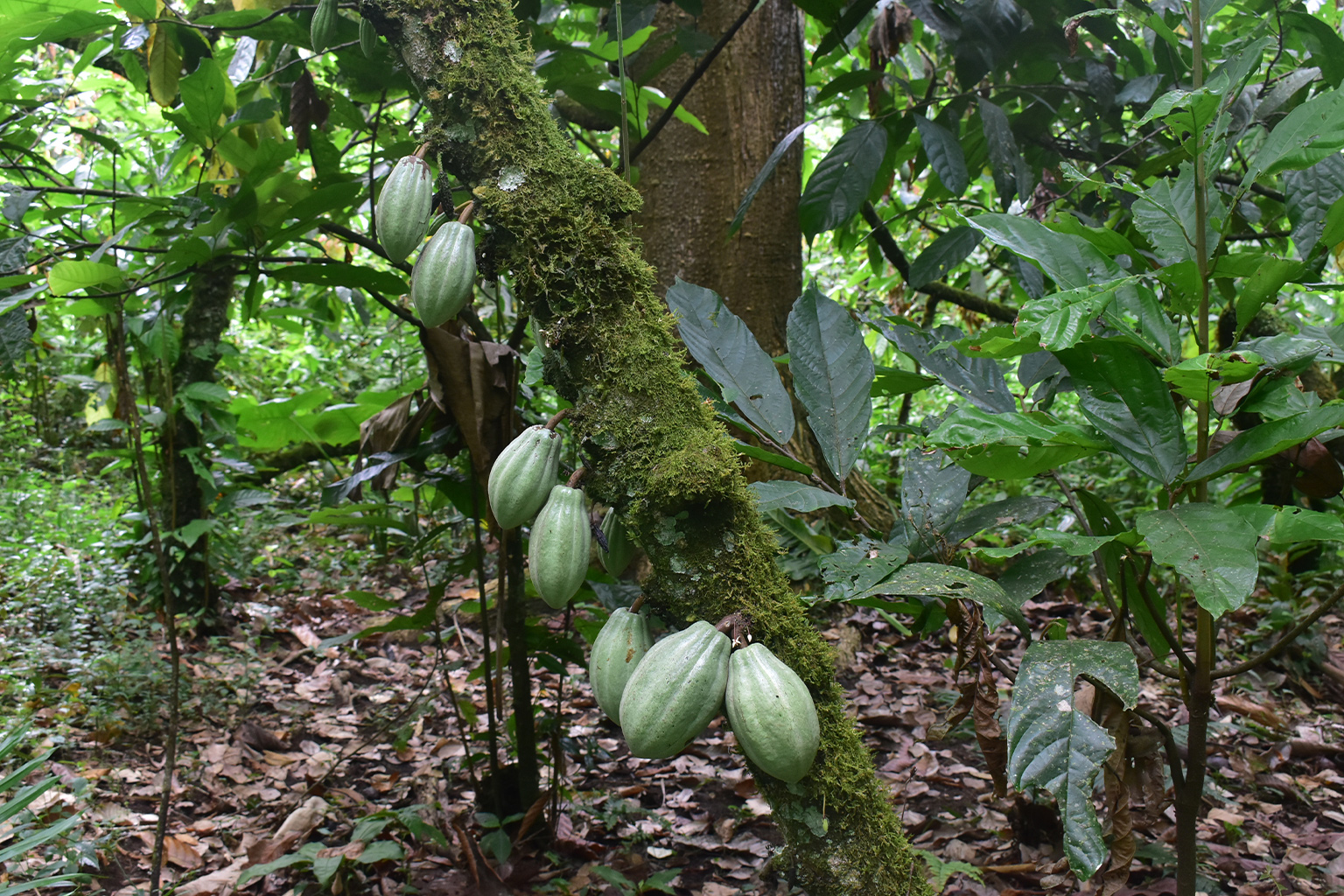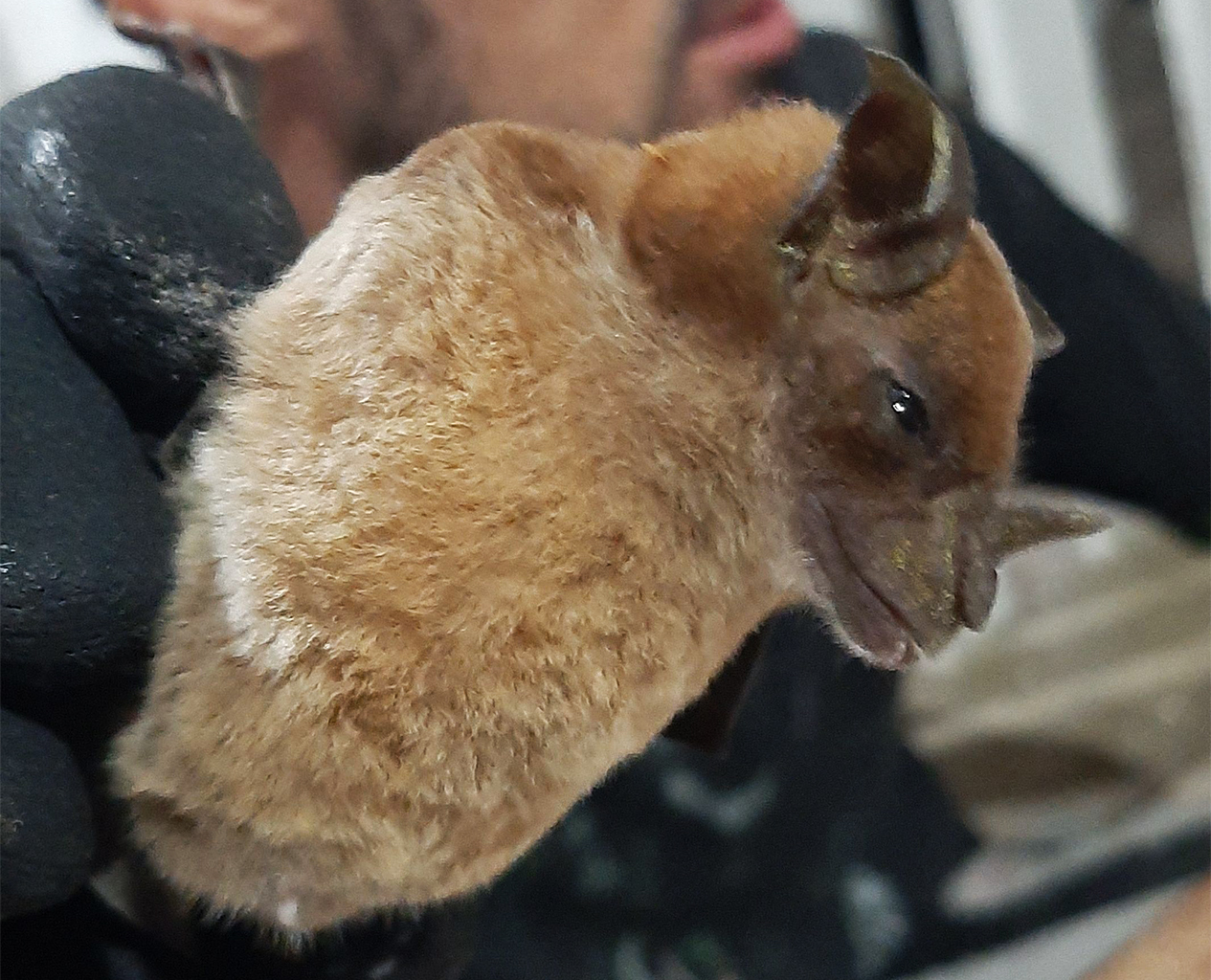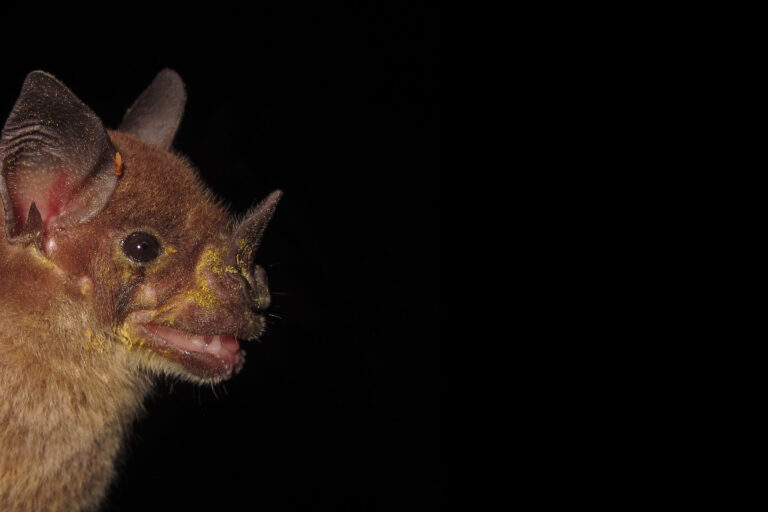- In tropical regions, bats play a crucial role as pollinators, seed dispersers and agricultural pest controllers. But they face a variety of threats, including pollution.
- Two recent papers show how natural landscape conversion and degradation due to the creation and degradation of pasture and crop monocultures in the Brazilian Atlantic Forest can increase the bioaccumulation of toxins and heavy metals in bat populations, leading to potential health impacts.
- Over time, this toxic accumulation could increase the likelihood of local bat extinctions and loss of vital ecosystem services. The toxic contamination of these landscapes also poses a problem for human health, researchers say.
- Researchers say these findings are likely applicable to bats living in other highly disturbed tropical habitats around the world.
Bats play a key role in maintaining the health of forest ecosystems as pollinators, seed dispersers and pest controllers. But according to new research, bats and the ecosystem services they provide are under threat in Brazil's highly fragmented Atlantic Forest biome, where natural areas have largely been converted to agriculture and mining, leading to increased exposure of wildlife to toxic heavy metals.
Scientists at Brazil's Santa Cruz State University picked hair samples from bats in the state of Bahia in a patchwork of landscapes – including cattle pastures, eucalyptus and coffee monocultures, and cocoa agroforestry – and then tested them for three metals: lead, manganese and copper.
“We found that bats living in areas where the landscape is dominated by intensive agriculture or grasslands have higher levels of toxic metals, particularly lead and manganese,” says Julián Barillaro, study leader and conservation ecology researcher at the Santa Cruz State University. This is probably due to the use of agrochemicals and leaded fuel. Decreased natural habitat also likely increased exposure.
Other factors such as bat species and gender did not influence bioaccumulation, leading the authors to believe that the bats came into direct contact with these heavy metals by resting on contaminated leaves or trees and then preening. Exposure levels within different monocultures require further study, Barrilaro says, as some bat species are highly mobile and could migrate from crop to crop.
In comparison, the researchers found that bats in cocoa agroforestry areas with greater natural forest cover had lower levels of contamination, although some bats had elevated copper levels, possibly due to fungicide use.
This finding is important, says Barillaro, because it suggests that organic cocoa farming, which replaces agrochemicals with less environmentally damaging farming methods, could be a win-win for farmers and biodiversity. “We show that a landscape with more agroforest is more bat-friendly than a monoculture landscape,” says Barillaro.
“These results are very important for the protection of bats and other wildlife because they show that monocultures with extensive use of pollutants can affect animals through direct contact not only with fruits but also with water,” says Ana Luiza Destro, a postdoctoral researcher in the Department of Biochemistry and Molecular Biology, Federal University of Viçosa, Brazil, who was not involved in the research.


A variety of pollution
In another study published earlier this year, Destro and colleagues found that flying foxes exposed to toxic pollutants from iron ore and bauxite mining in the Atlantic Forest had direct health effects. Bats in these heavily disturbed areas accumulate metals, including aluminum, iron and barium, and show signs of liver, kidney, brain and muscle damage or inflammation that researchers attribute to these pollutants. Bats from iron ore mining areas were more affected.
“These impacts, in addition to contamination caused by the increase in metals in the environment, are also closely linked to the loss of habitat and food for animals. This, in turn, affects animal health and potentially increases the harmful effects of pollutants,” says Destro. Agricultural monocultures also limit habitat and food availability, likely leading to a similar effect.
Barillaro says the physiological damage found in the mining study supports the concerns raised in his group's work: “Overall, these studies highlight the significant threats bats face from human activities and the urgent need for policy action other than direct pollution, but also habitat degradation and sustainable landscape management.”
Although it is difficult to link these findings to broader ecosystem and human health impacts, both researchers say that environmental contamination with toxic substances likely poses a potential risk to other species and humans.
“If the environment is contaminated, if animals are contaminated, it will inevitably reach humans,” says Destro. “Whether through the food chain, the ingestion of contaminated water or even through inhalation.”
“This study shows that it contains a lot of heavy metals [these disturbed places]and that can have an impact on human health, especially those who work directly in the cultivation,” agrees Barillaro. This exposure can be increased if workers do not have adequate personal protective equipment. Lead is of particular concern to both bats and humans because it is particularly harmful and is associated with a number of serious health effects.

Further effects
The results of both studies point to risks to bat populations and the ecosystem services they provide to humans. Bats not only play a key role in forest regeneration by pollinating plants or widely dispersing seeds, but they are also vital as pest controllers. Research suggests that bats, along with birds, play an important role in cocoa crop yields.
Given other pressures such as loss of habitat and access to food, pollution could increase the risk of local extinctions. And it could have further consequences: Research published in the US earlier this year linked widespread bat declines and increased use of agricultural insecticides to higher infant mortality in affected areas.
In the Atlantic Forest, the role of bats may be particularly important because the beleaguered biome has been subject to decades of heavy deforestation, endangering wildlife and tree species. Without healthy bat populations, the resilience of remaining forest areas could be compromised and regeneration could suffer a setback, the researchers say. “If the health of these animals is at risk, the forests and their ability to regenerate will also be increasingly at risk,” says Destro.
Protecting the remaining forest, adopting sustainable agriculture such as cocoa agroforestry, prioritizing rainforest regeneration and minimizing the use of agrochemicals are important steps to support bat populations, says Barillaro. More sustainable approaches to mining and measures to reduce tailings pollution are also needed.
Although both studies focused on the highly fragmented Atlantic Forest, it is likely that the pattern of toxic bioaccumulation found there is similar in other tropical regions damaged by agriculture and mining around the world, Barillaro adds. “This is likely what is happening with bats and other wildlife where there is landscape change, degradation and monoculture in these areas.” [animals] may be more exposed to pollutants.”
Banner image: A pale spear-nosed bat covered in pollen. Another recent study linked metal contamination and health effects on bats to iron and bauxite mining in the Atlantic Forest. Iron is converted into steel and bauxite into aluminum, both of which are vital to humanity's advanced societies. Image courtesy of Guilherme Garbin.
Deforestation in the Amazon is threatening one of Brazil's most important pollinators, a study shows
Quotes:
Barillaro, J., Soto da Costa, L., Gómez-Corea, WN, García, FJ, Pereira de Souza, A. & Bovendorp, R. (2024). Landscape degradation drives metal bioaccumulation in bats from the Atlantic Forest cocoa region of Brazil. Environmental science and pollution research, 31(55), 63819-63833. doi:10.1007/s11356-024-35478-x
Destro, AL, Gonçalves, DC, Alves, TD, Gregório, KP, Da Silva, VM, Santos, VR, … Freitas, MB (2024). Pollution from iron and aluminum ore mining causes oxidative and tissue damage to fruit-eating bats from the Atlantic Forest. Hazardous Materials Journal, 465133285. doi:10.1016/j.jhazmat.2023.133285
Hernout, BV, Arnold, KE, McClean, CJ, Walls, M., Baxter, M. & Boxall, AB (2016). A national assessment of metal contamination in bats. pollution, 214847-858. doi:10.1016/j.envpol.2016.04.079
Ocampo-Ariza, C., Vansynghel, J., Bertleff, D., Maas, B., Schumacher, N., Ulloque-Samatelo, C., … Tscharntke, T. (2023). Birds and bats increase cocoa yields despite suppressing mesopredation by arthropods. Ecological applications, 33(5). doi:10.1002/eap.2886
FEEDBACK: Use this form to send a message to the author of this post. If you would like to make a public comment, you can do so at the bottom of the page.
